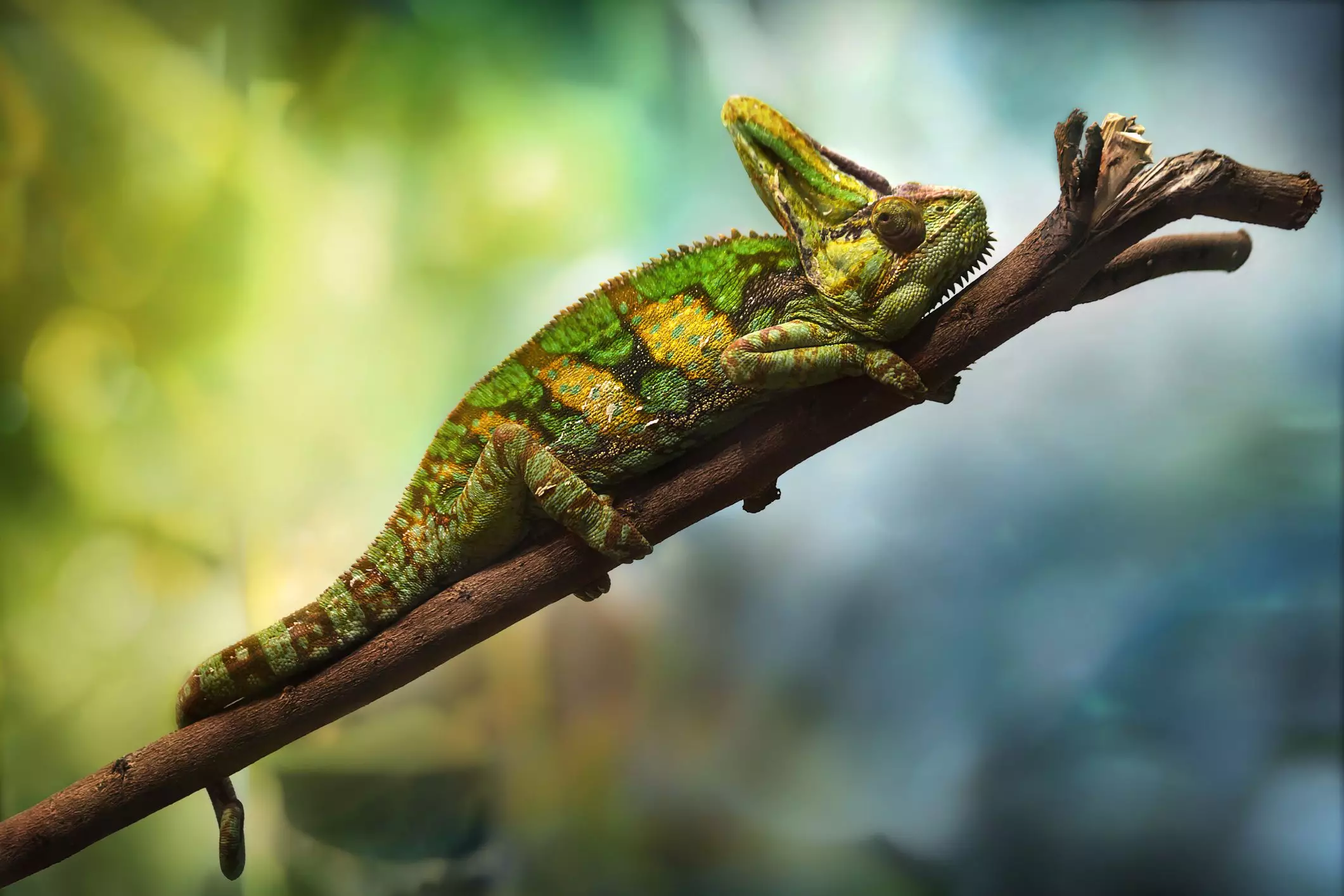Veiled chameleons, known scientifically as Chamaeleo calyptratus, are striking reptiles that hail from the arid regions of Yemen and Saudi Arabia. With their vivid coloration and intriguing behaviors, these lizards are both fascinating to observe and demanding to care for. This article aims to provide a thorough overview of their needs, habitats, and care requirements, ensuring that potential owners understand the commitment involved in keeping these unique creatures.
Veiled chameleons are well-known for their distinctive features, particularly the pronounced casques on their heads, which resemble helmets. Males typically grow to a total length of 18 to 24 inches, whereas females are smaller, generally measuring between 10 to 13 inches. This remarkable size difference is noteworthy for prospective owners, as it informs housing and care requirements. In captivity, these lizards can live for approximately six to eight years, a duration that demands thoughtful dietary and environmental management throughout their lives.
Creating an appropriate habitat is crucial for the well-being of a veiled chameleon. These reptiles thrive in vertically oriented enclosures with ample height, a minimum recommended size being 36 inches by 24 inches by 36 to 48 inches tall. This vertical space allows chameleons to climb, which is a natural behavior for them. The enclosure should be made of mesh rather than glass; while glass enclosures can be visually appealing, they lack adequate ventilation that chameleons need to maintain their health.
Furthermore, cleanliness is paramount in a chameleon’s habitat. Regular cleaning can prevent bacterial and mold issues. Utilizing non-toxic materials, such as paper towels for the base and incorporating sturdy plants and branches for climbing, creates a more natural environment. Plants like pothos and hibiscus, which offer climbing opportunities without risking the reptile’s health, are excellent choices.
Maintaining the right temperature and humidity is vital for the health of veiled chameleons. The enclosure should maintain a daytime temperature range of 72 to 80 degrees Fahrenheit, with a basking spot reaching between 85 and 95 degrees Fahrenheit. Nighttime temperatures can safely drop to 65 degrees Fahrenheit, making heating during nighttime unnecessary unless your home is particularly cold.
Humidity levels should be kept moderate—around 50%—which can be achieved through misting the plants within the enclosure several times a day. A hygrometer can be beneficial to monitor these levels accurately, ensuring the chameleon is comfortable and healthy.
Proper lighting is essential to prevent various health issues. Veiled chameleons require a full-spectrum ultraviolet (UVA/UVB) light source for 10 to 12 hours daily. This lighting mimics natural sunlight, enabling them to synthesize vitamin D3, which is crucial for calcium absorption. Regular replacement of the UV bulb, at least every six months, ensures that the light remains effective.
Veiled chameleons are primarily insectivorous, necessitating a varied diet that includes gut-loaded insects such as crickets, roaches, and silkworms. Feeder insects should be dusted with a calcium and vitamin D3 supplement two to three times a week to ensure adequate nutrition. It’s important to offer a blend of insects to guarantee a balanced diet and avoid over-reliance on any single food type.
In addition to insects, small amounts of non-toxic plant matter can be provided—items like diced zucchini, dandelion leaves, or blueberries can enhance their diet. However, owners must closely monitor feeding habits and adjust based on the individual chameleon’s appetite and body condition.
Regular health checks are a critical part of caring for veiled chameleons. Owners should watch for signs of stress such as respiratory issues, mouth rot, or nutritional deficiencies. Routine vet visits, particularly for newly acquired chameleons, can help detect problems early. It’s wise to avoid wild-caught insects to minimize exposure to pesticides and parasites.
Chameleons, while visually captivating, often do not enjoy physical handling, making them more suitable for observation rather than active interaction. Their unique nature demands a commitment to creating a stable environment that mimics their natural habitat as closely as possible.
Veiled chameleons are exotic pets that offer a unique reward for dedicated owners willing to invest time and resources into their care. Potential owners should prepare for the complexities of proper habitat creation, dietary management, and health monitoring. By understanding and catering to the specific needs of these remarkable lizards, one can ensure their well-being and enjoy the beauty they bring to any household.

